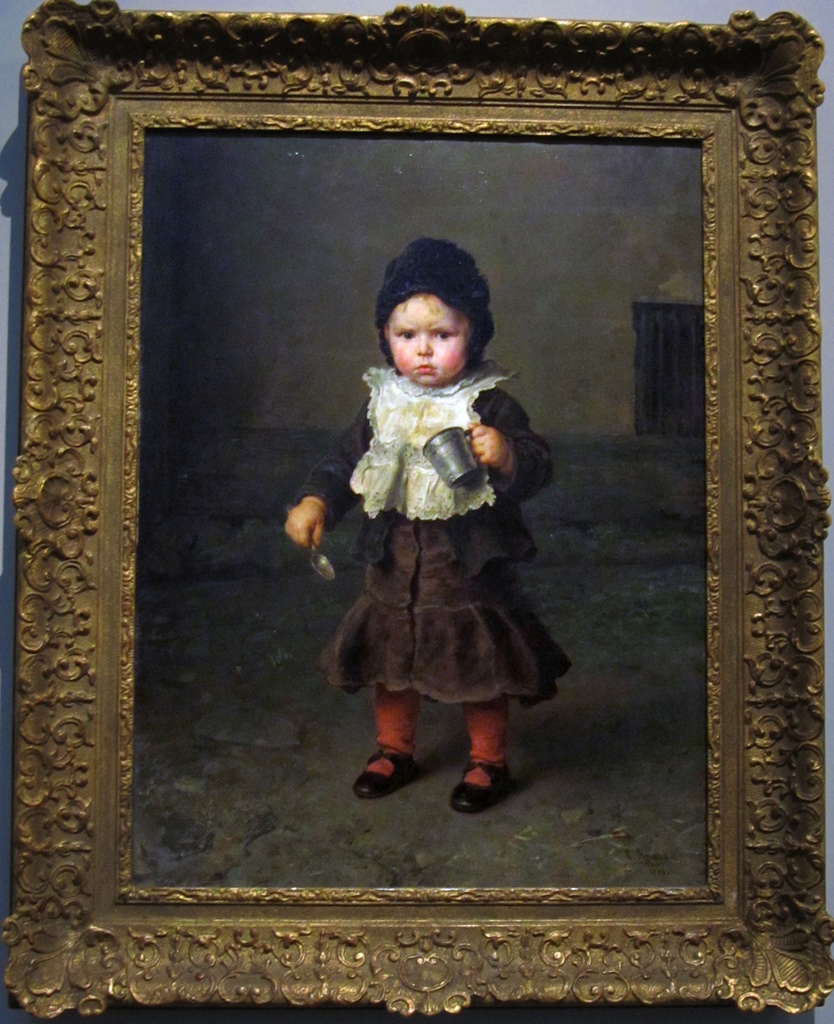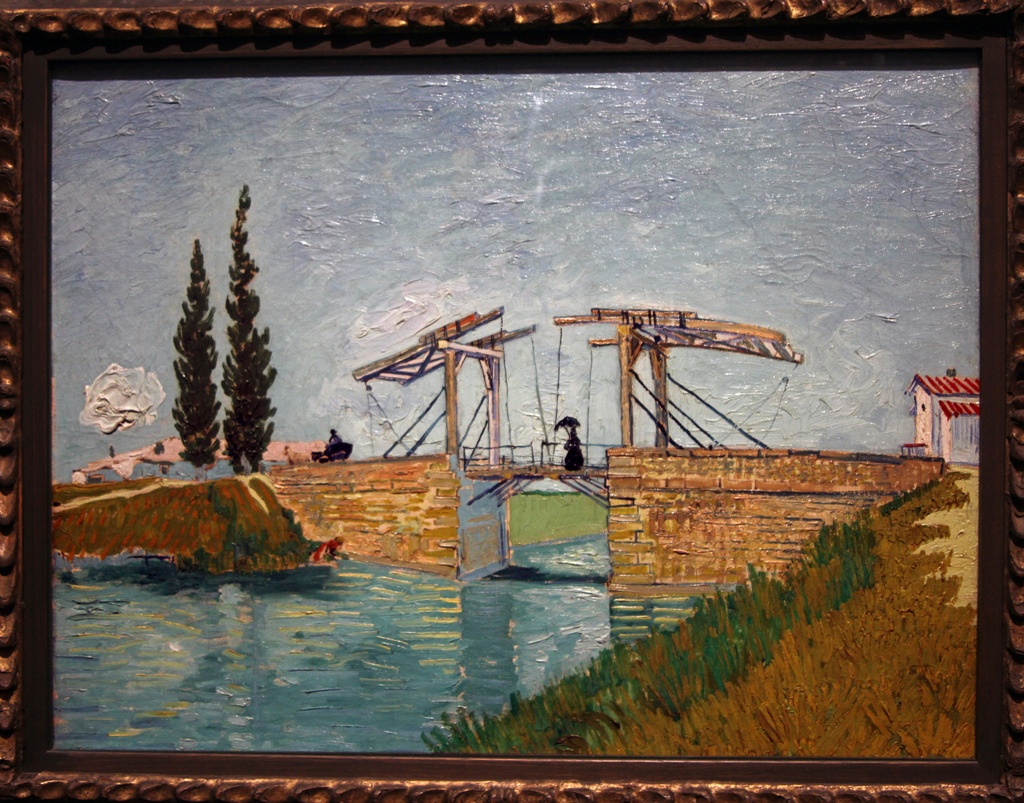We woke up the next morning needing to eat and check out of our hotel room. We
also needed to catch a train to Belgium. However, our train didn’t leave until
after 3 PM, and we weren't really looking forward to wandering around Cologne
while dragging luggage everywhere we went. Fortunately the hotel allowed us to
leave our luggage with them while we visited one last Cologne attraction – the
Wallraf-Richartz Museum.
The Wallraf-Richartz had its beginning back in 1824, starting with the collection
of Ferdinand Franz Wallraf. Wallraf was a botanist, mathematician, theologian
and priest. When the revolutionary French army occupied the area in 1798, he
also became a collector of things connected with the history of Cologne, largely
to keep them out of the hands of the French. This included a wide variety of
objects such as Roman artifacts, manuscripts and coins, but also ended up
including a large collection of medieval and religious paintings. When Wallraf
died in 1824, he bequeathed his collections to the city of Cologne.
The first museum building dedicated to the display of the Wallraf art collection
wasn’t built until 1861. It was largely built with funds donated by a
businessman named Johann Heinrich Richartz, who also left some funds for expansion
of the collection. As described in the Ludwig Museum page, the Wallraf-Richartz
collection eventually moved to a new building in 1986 which it shared with the newly-acquired
Ludwig collection. By this time the Wallraf-Richartz had acquired many more
artworks through purchase and donation, including contemporary artworks. Some
shuffling around of collections was done to give the two museums distinct
identities – works up to and including impressionism and post-impressionism became
the domain of the Wallraf-Richartz, and anything later went into the Ludwig
collection. In 2001 the museums split into two facilities, and the same year a
Swiss collector named Gérard Corboud gave the Wallraf-Richartz his large
collection of impressionist and post-impressionist paintings as a "permanent
loan". This led to another change of the museum’s name, which is now the
"Wallraf-Richartz Museum and Fondation Corboud". But it’s generally just referred
to as the Wallraf.
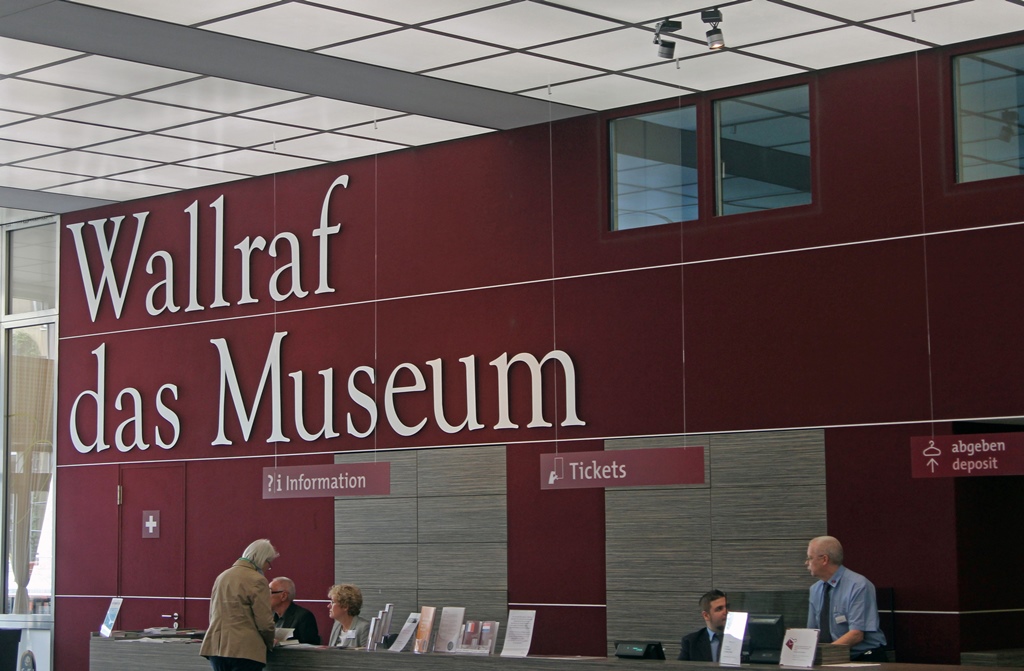
Information and Ticket Counters
We took our time going through the museum and spent a couple of pleasant hours,
first with pre- and early Renaissance paintings, universally depicting
religious events:
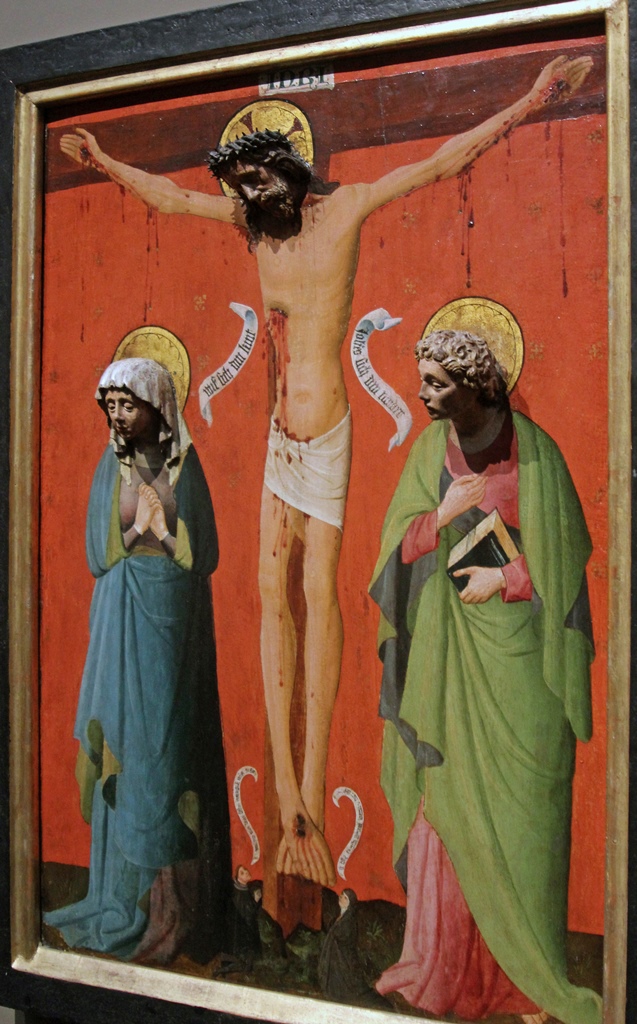
Christ on the Cross Between Mary and John, Cologne (ca. 1425-35)
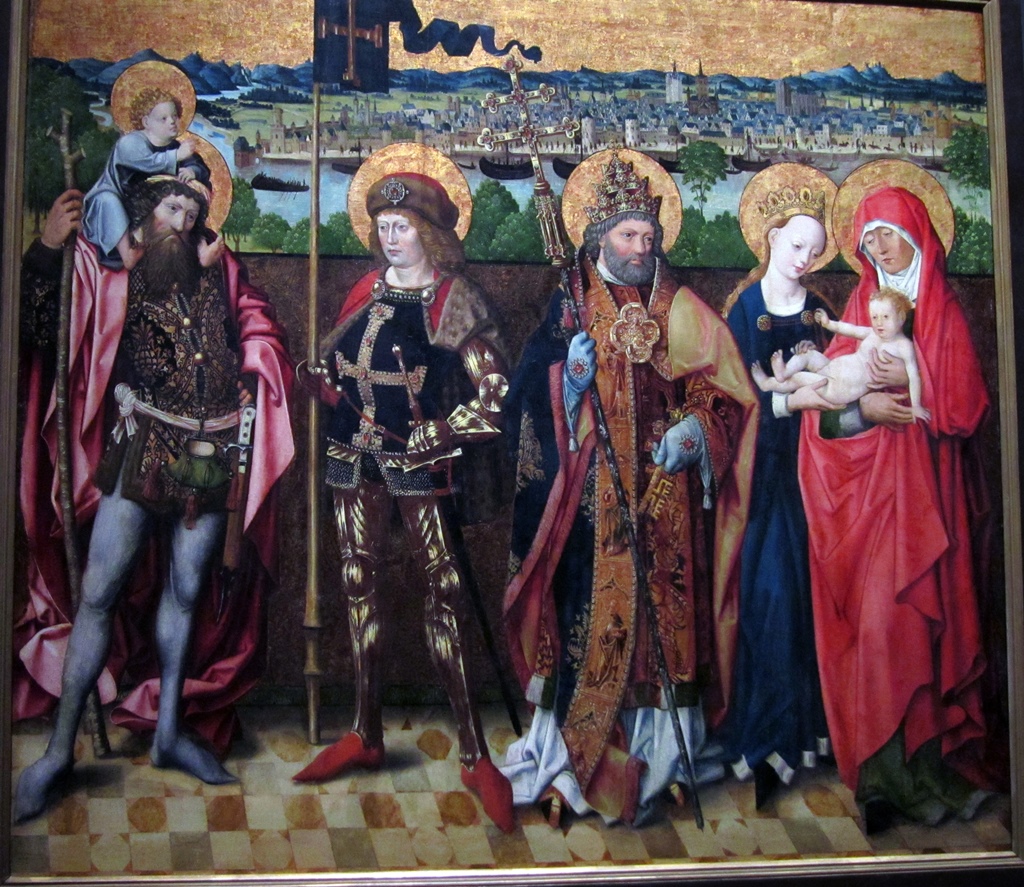
St. Anna, the Virgin and Christ Child, Master of the Glorification of Mary (ca. 1480)
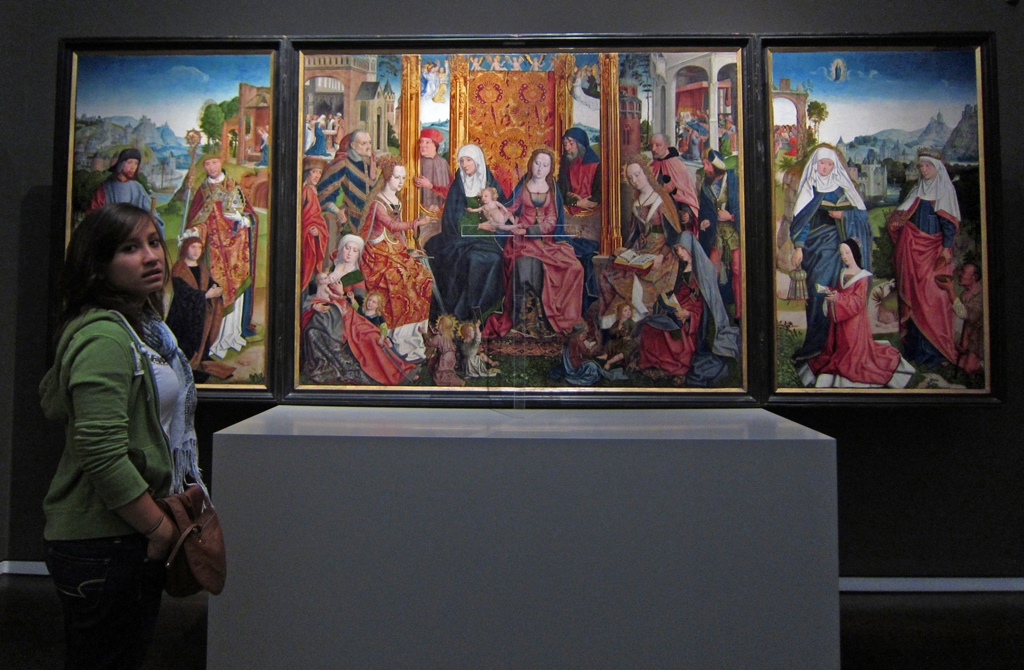
Connie and Family of Christ Triptych
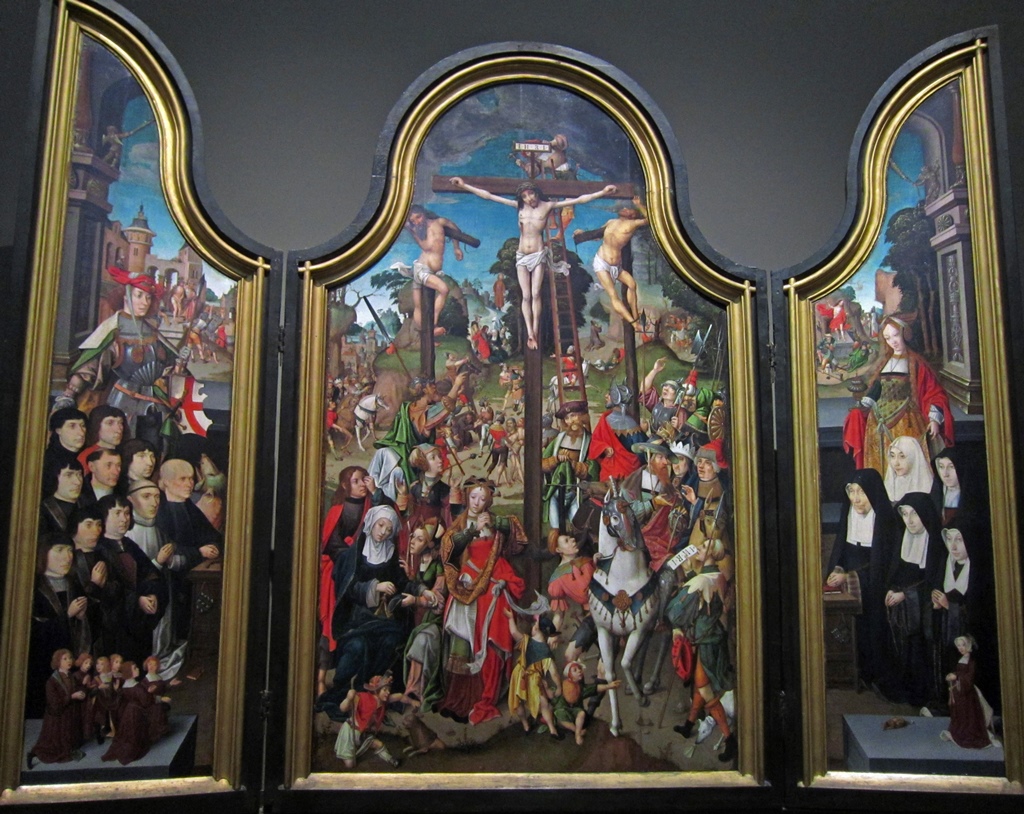
Triptych of the Kievit Family, Meister von Delft (ca. 1500)
While artists of the later Renaissance certainly didn’t abandon religious imagery,
they branched out somewhat, while coming up with new ways to depict the old subjects:
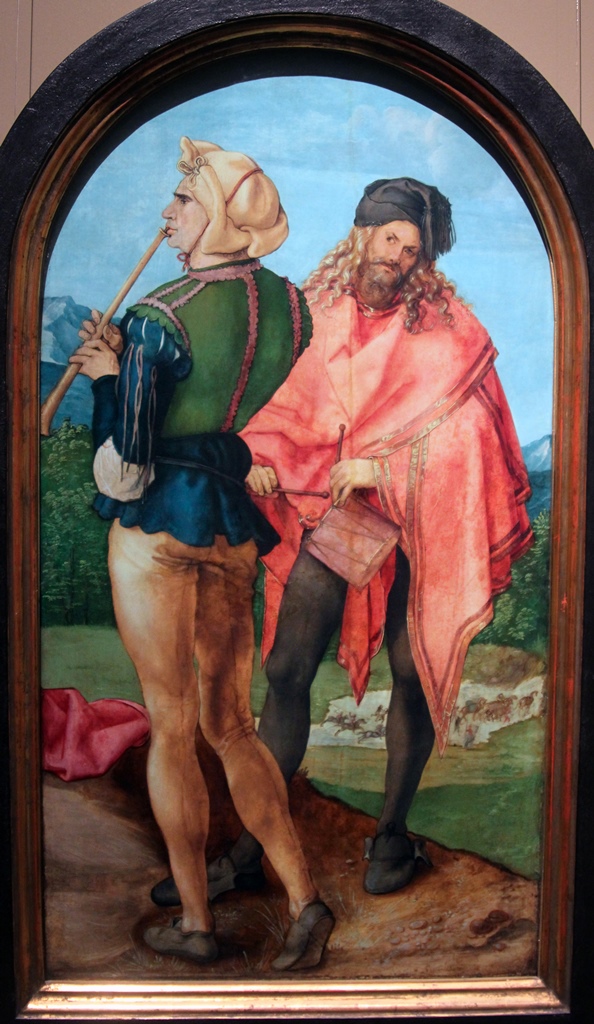
Piper and Drummer, Albrecht Dürer (1503-04)
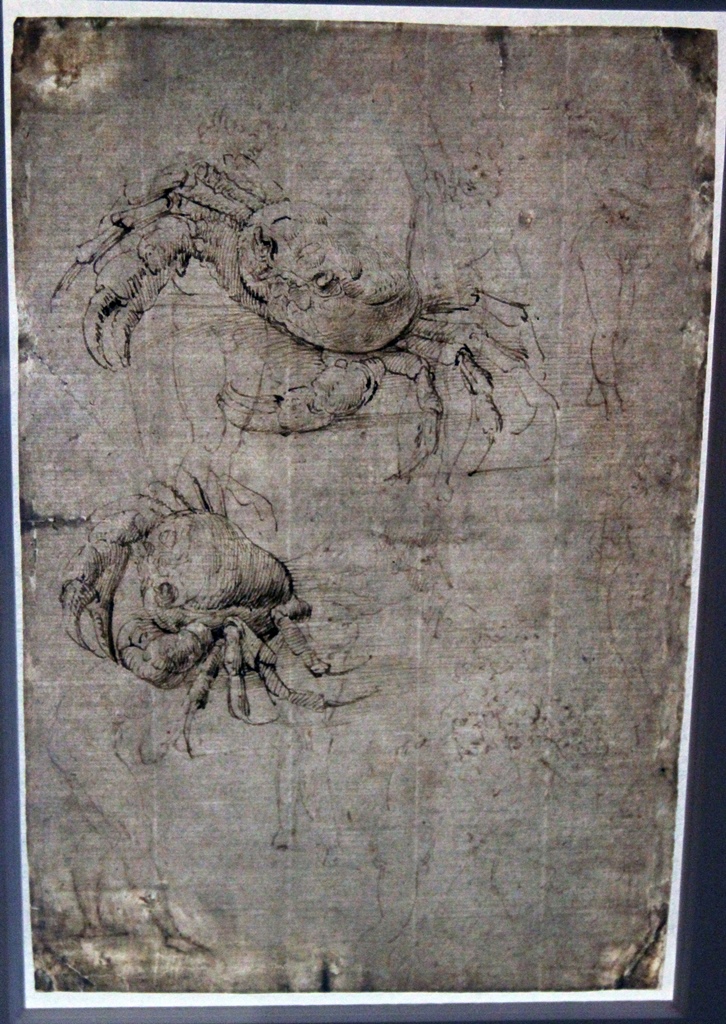
Two Studies of a Crab, Leonardo da Vinci
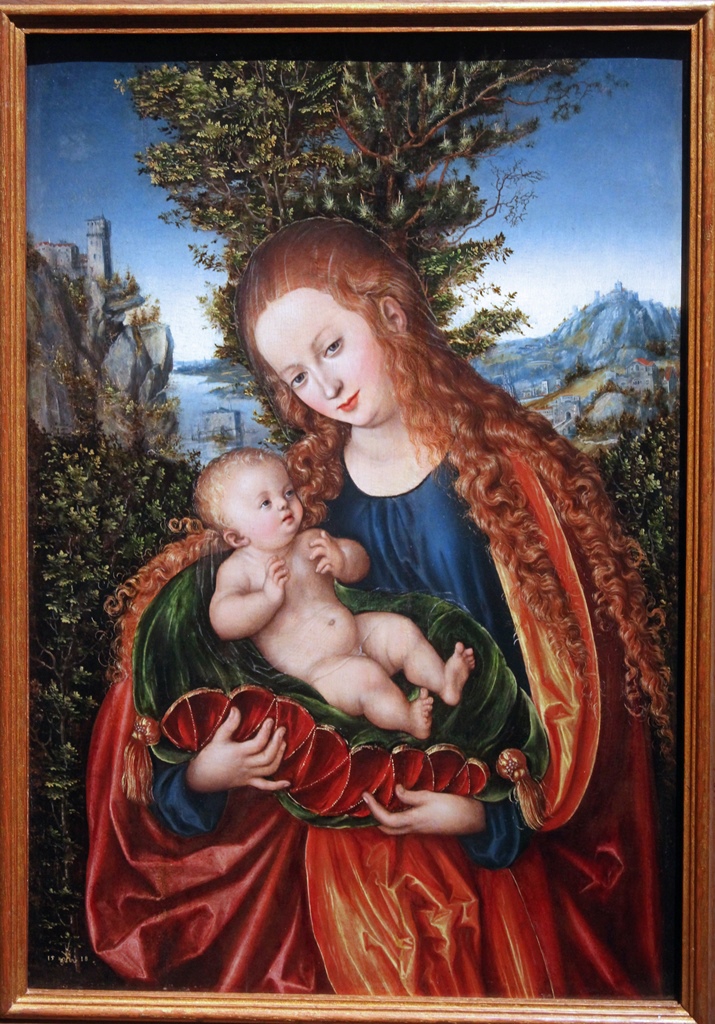
Virgin and Child, Lucas Cranach the Elder (1518)
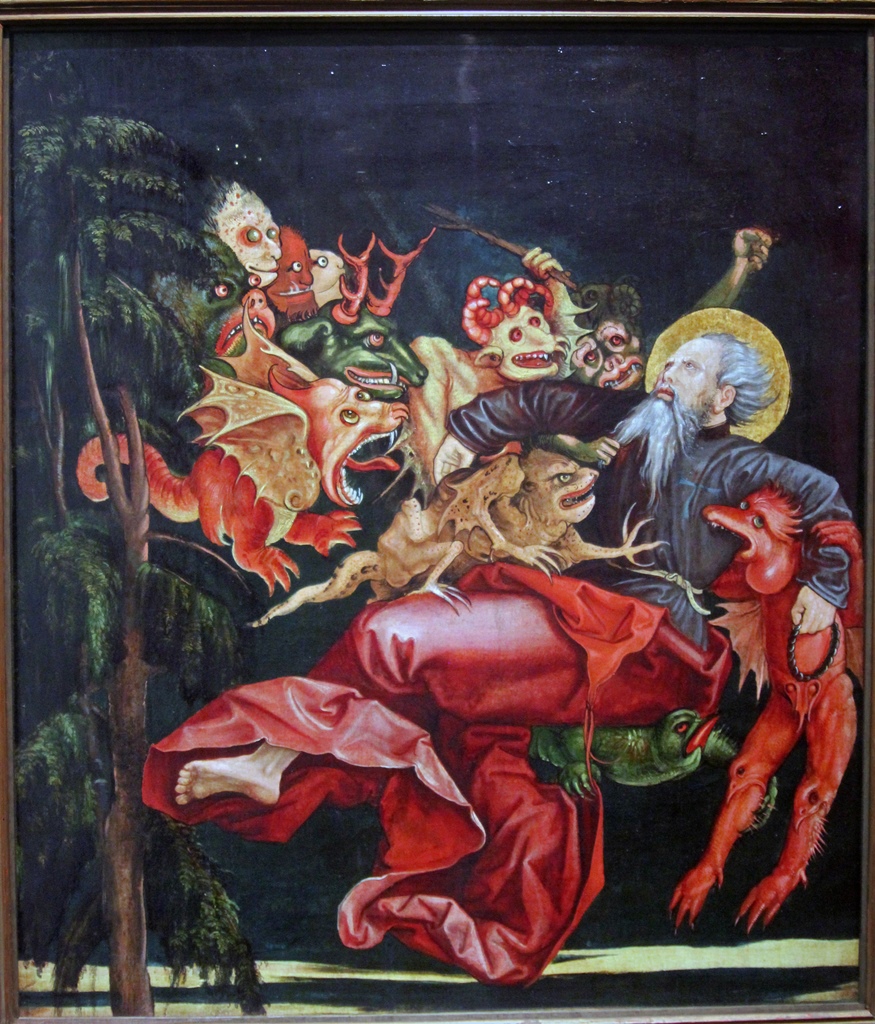
St. Anthony Tormented by Demons, Upper Rhine (ca. 1520)
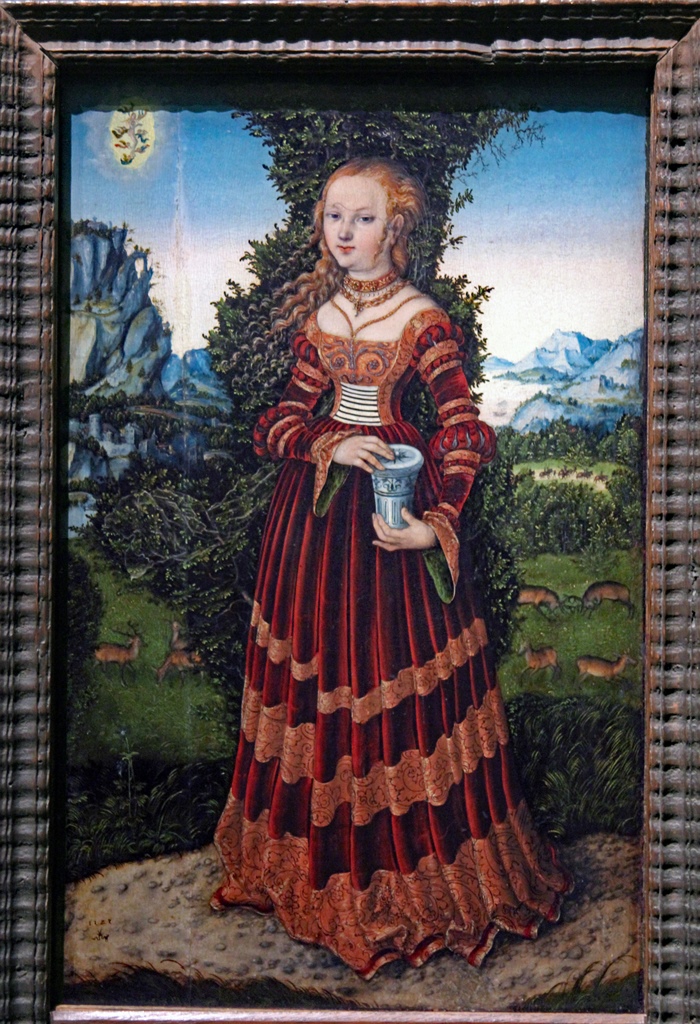
St. Mary Magdalene, Lucas Cranach the Elder (1525)
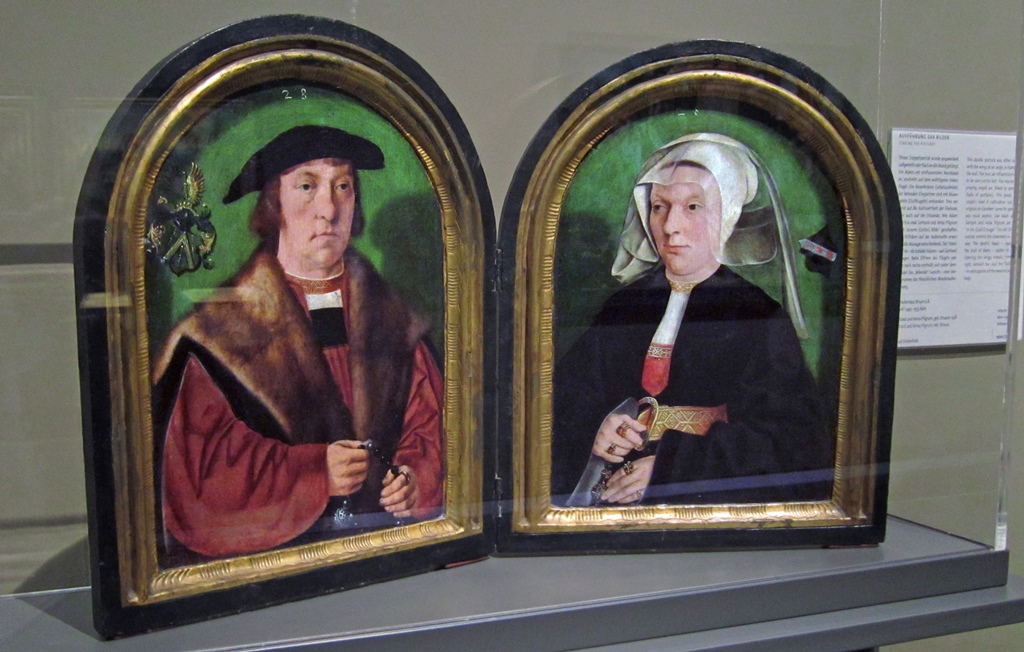
Gerhard and Anna Pilgrum, Bartholomäus Bruyn the Elder (1528)
The dramatic and prolific Peter Paul Rubens was well represented:
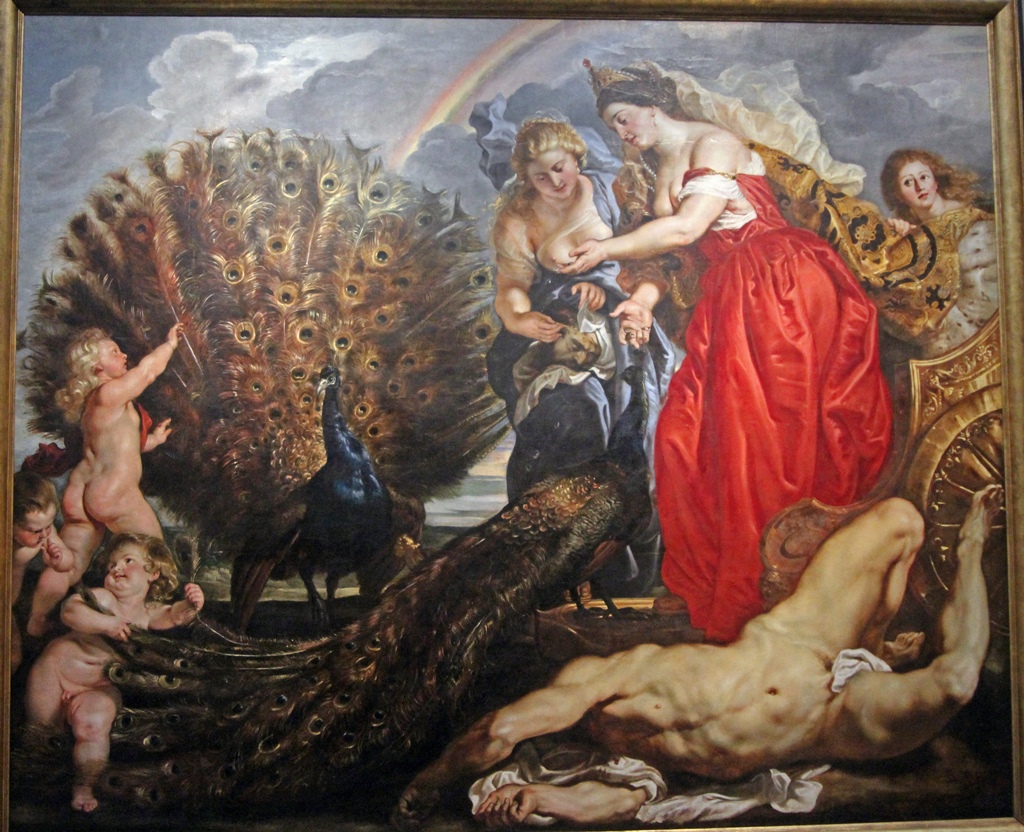
Juno and Argus, Peter Paul Rubens (ca. 1610)
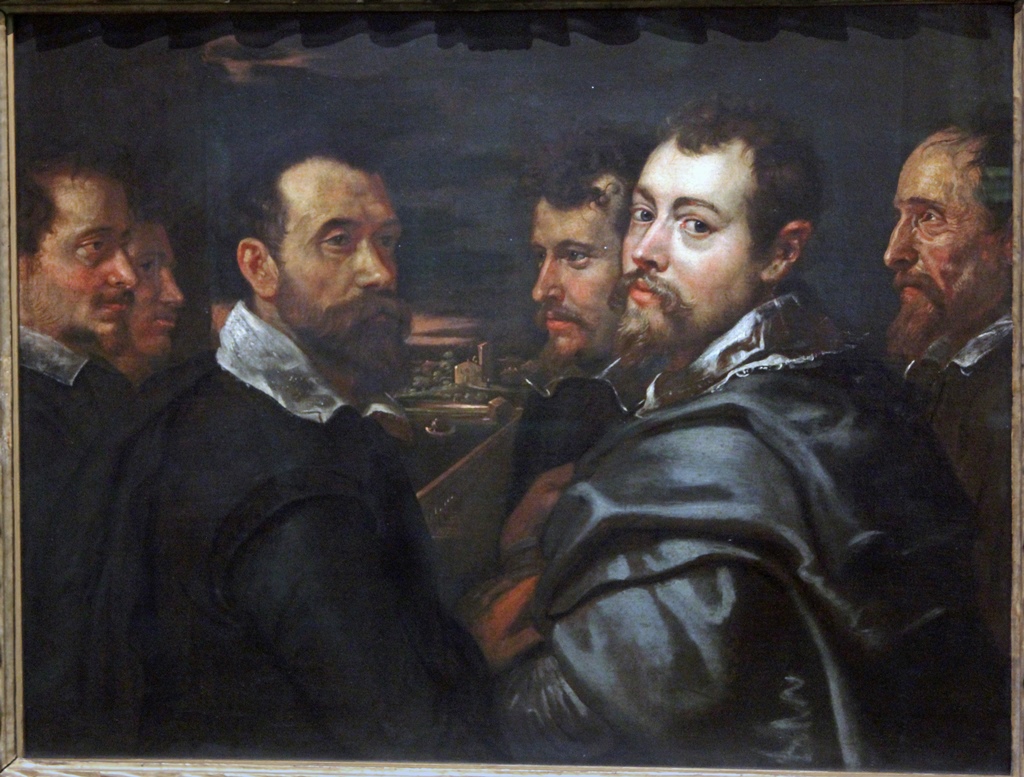
Self-Portrait in a Circle of Friends at Mantua, Peter Paul Rubens

The Stigmatisation of St. Francis, Peter Paul Rubens (1615-16)
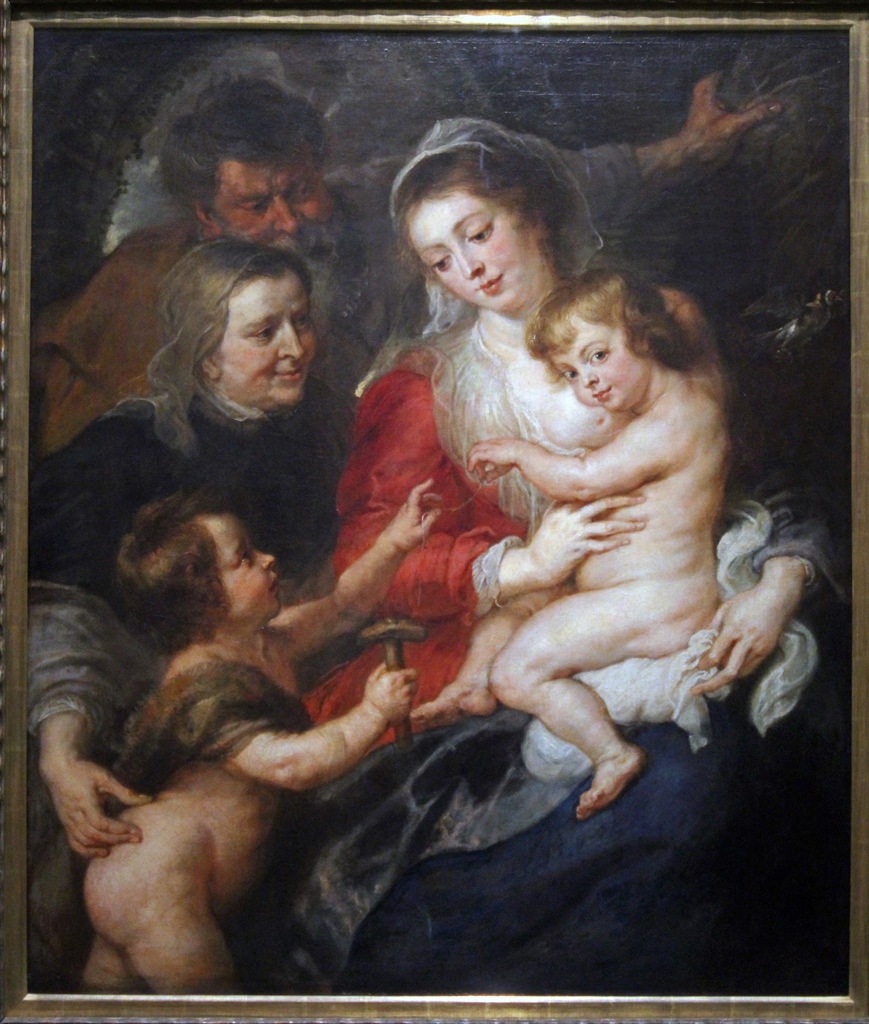
The Holy Family with St. Elizabeth and St. John the Baptist, Peter Paul Rubens (ca. 1634)
Other Flemish and Dutch artists of the same century continued to depict biblical
and mythical scenes, but also started to find beauty in day-to-day lives of
ordinary people.
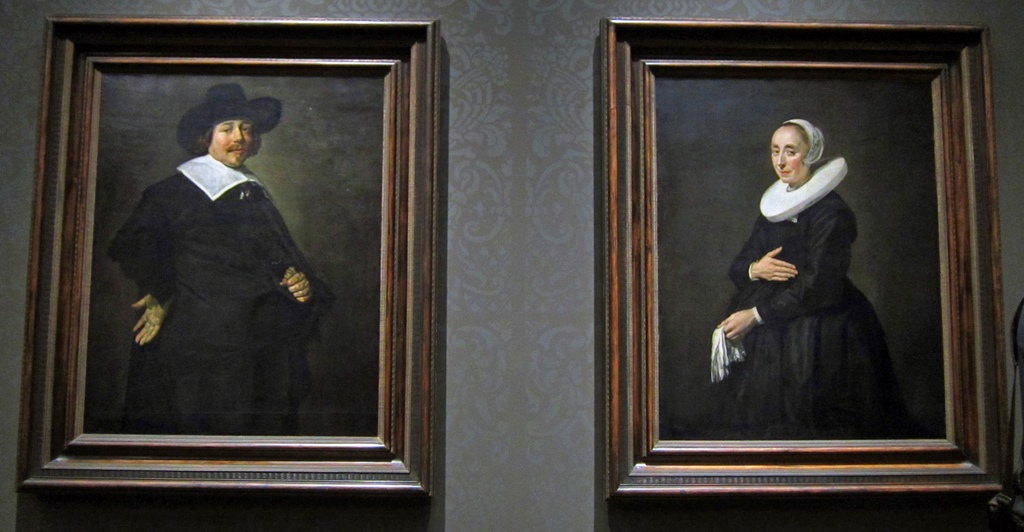
Portrait of a Gentleman and Portrait of a Lady, Frans Hals (ca. 1640)
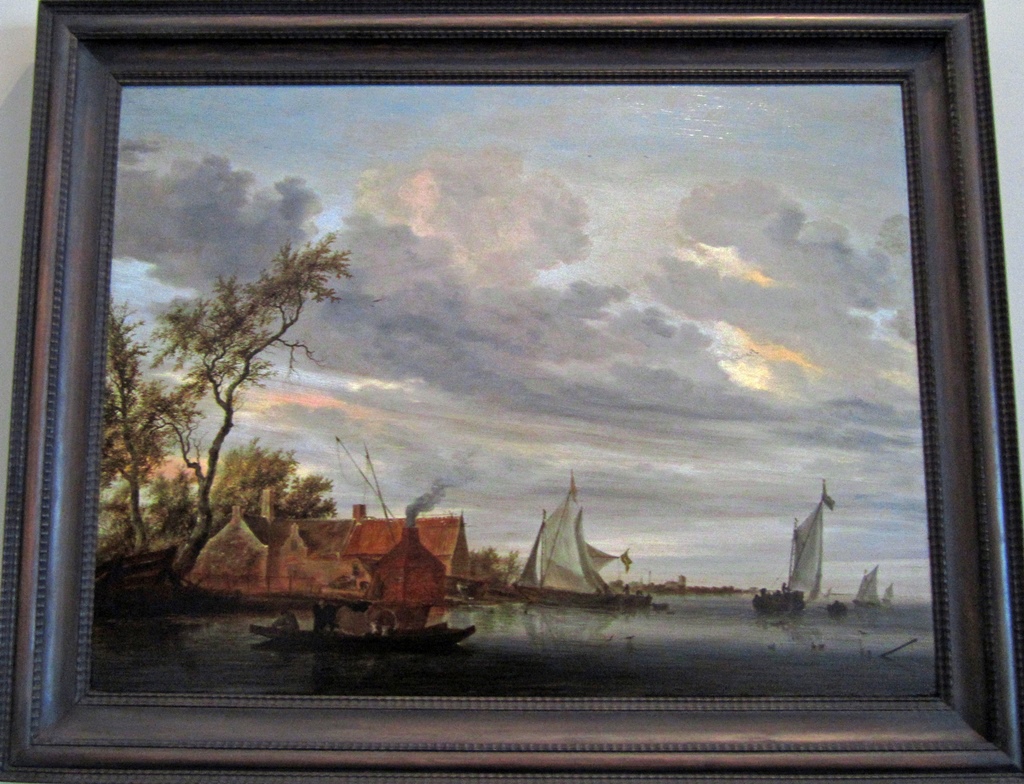
River Landscape with Farmstead, Salomon van Ruisdael (1647)
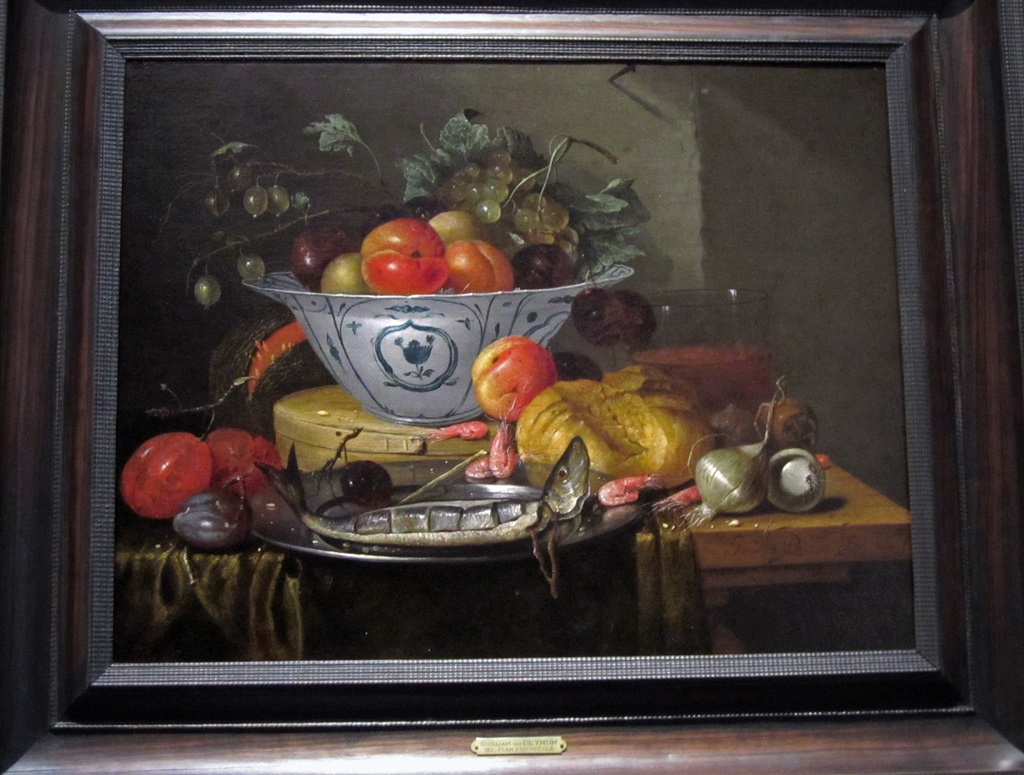
Still Life with Fruitdish and Fish, Gerard van Deynum (1654-59)
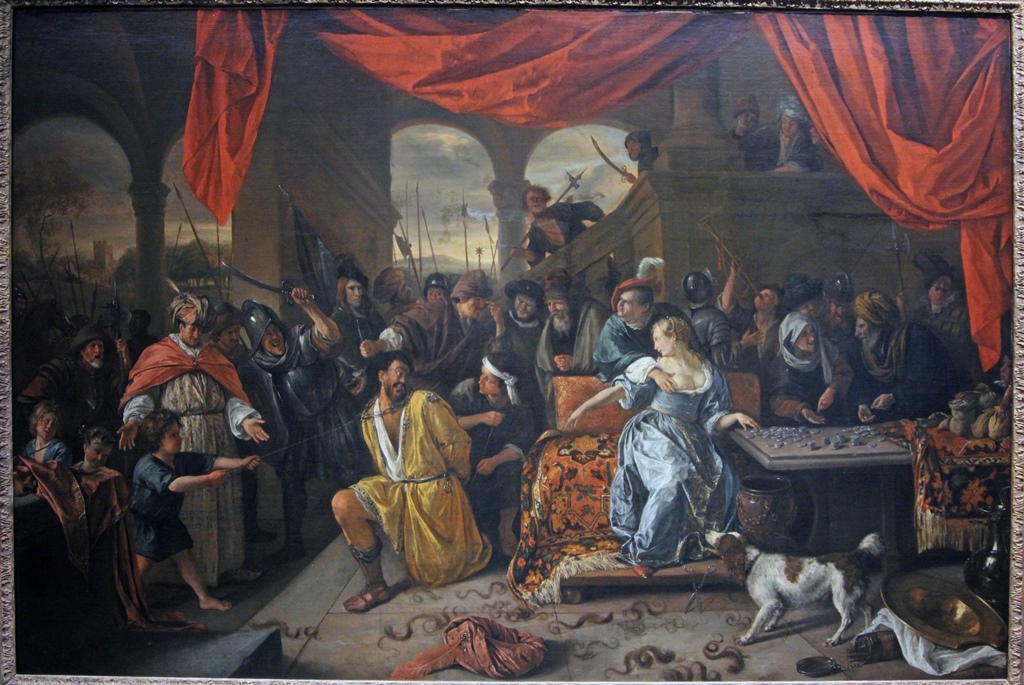
Samson and Delilah, Jan Steen (ca. 1660)
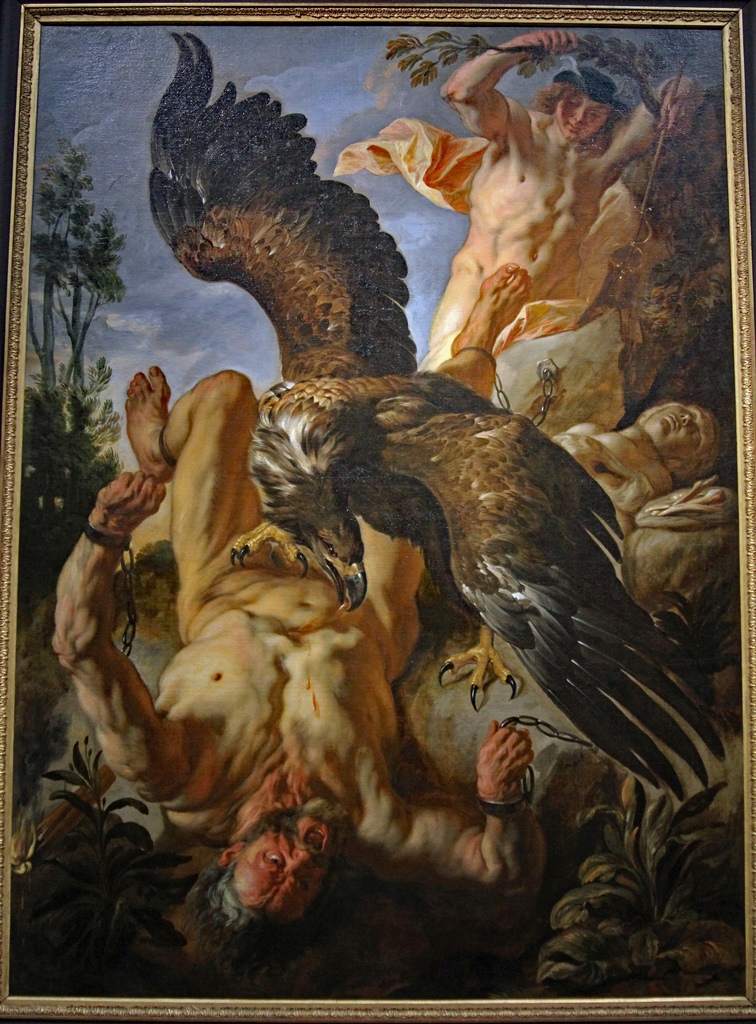
Prometheus Bound, Jacob Jordaens (ca. 1640)
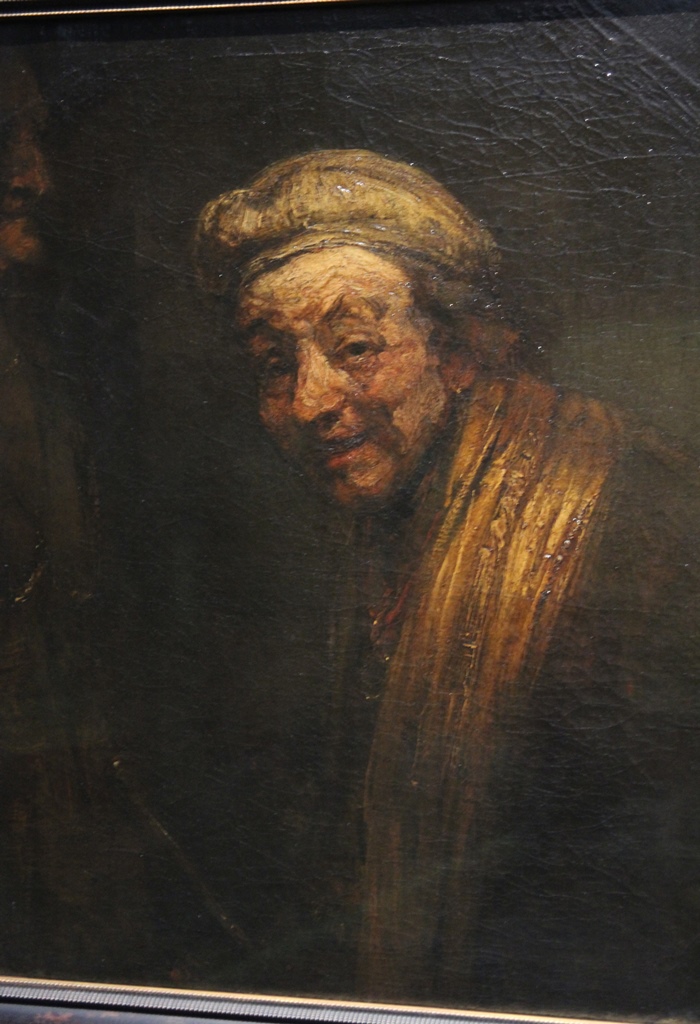
Self-Portrait, Rembrandt van Rijn (1662-63)
Passing by another painting, we looked out a window and noted how close we were to
the Town Hall we’d walked past the previous evening.
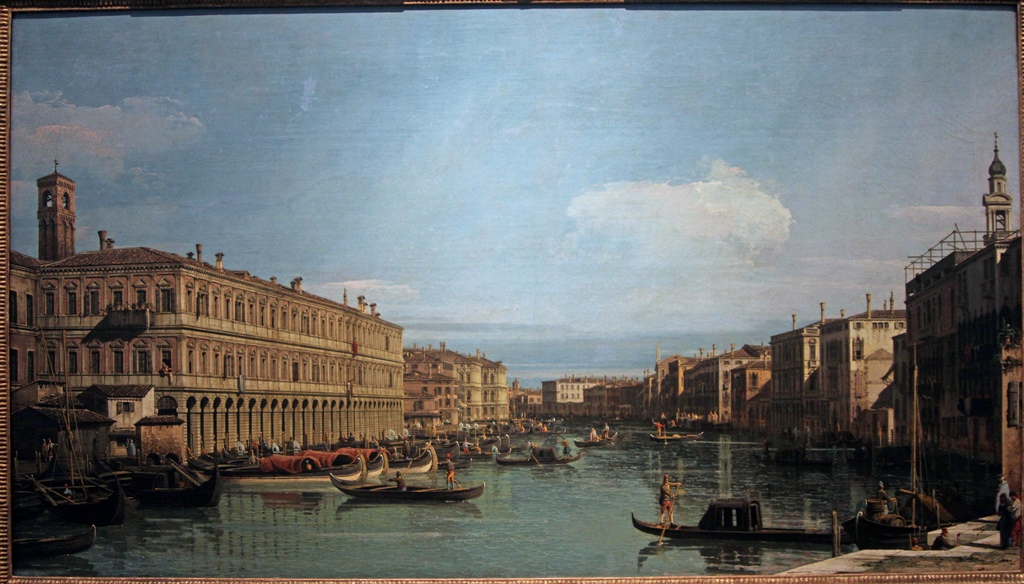
Grand Canal in Venice, North of Rialto Bridge, Canaletto (1741-43)
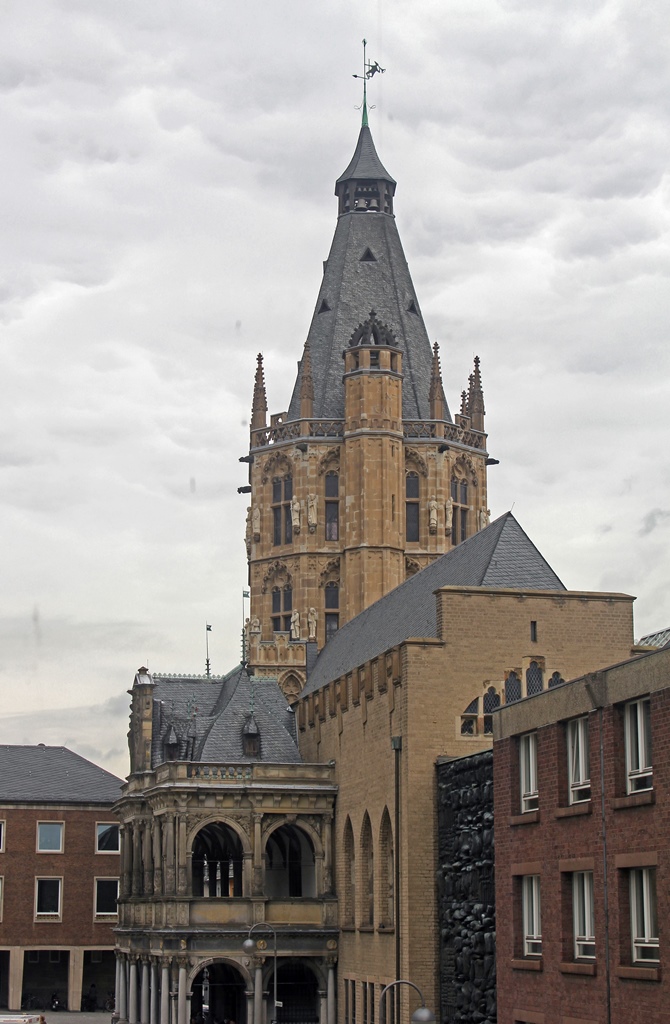
Cologne Town Hall
Then we started seeing works by the French impressionists:
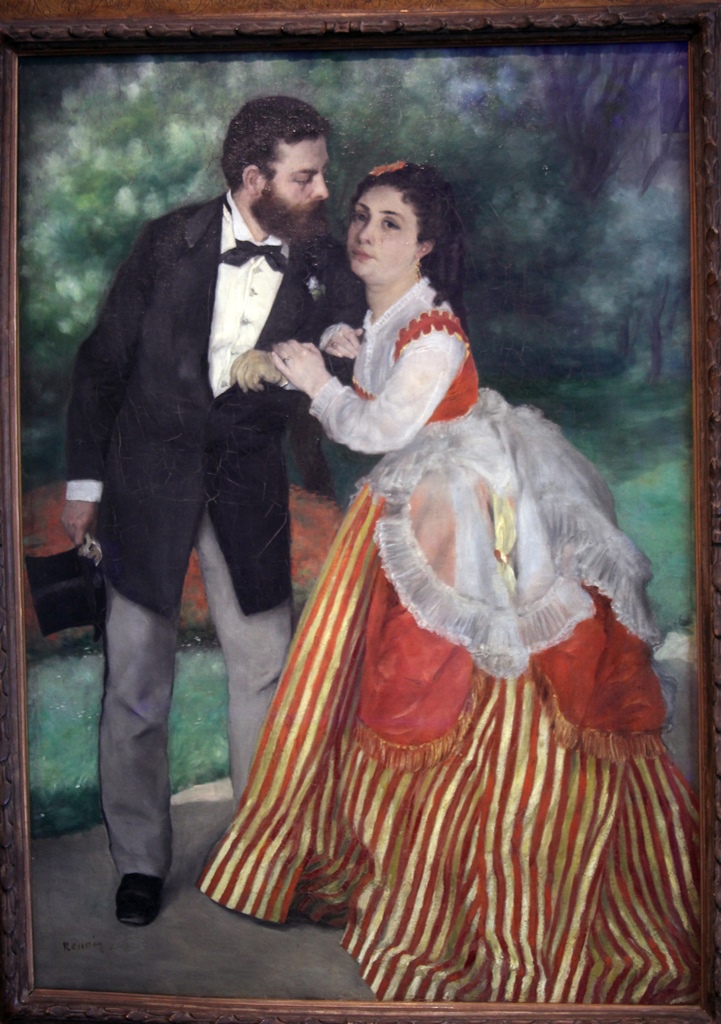
The Couple, Pierre Auguste Renoir (ca. 1868)
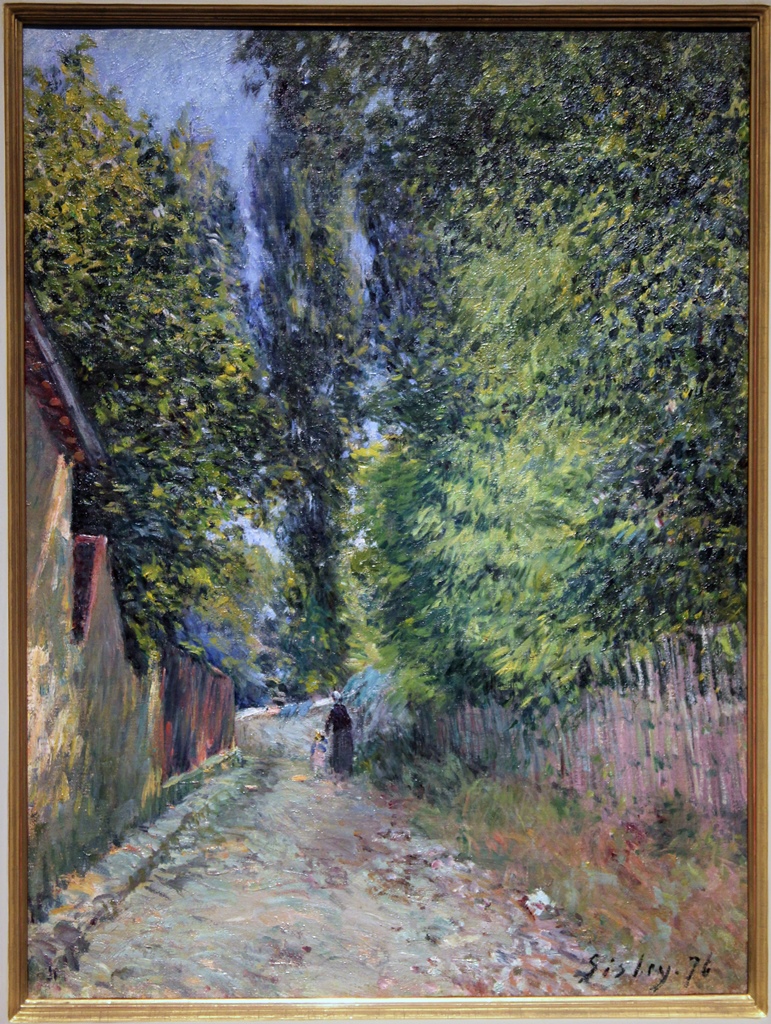
Outskirts of Louveciennes, Alfred Sisley (1876)
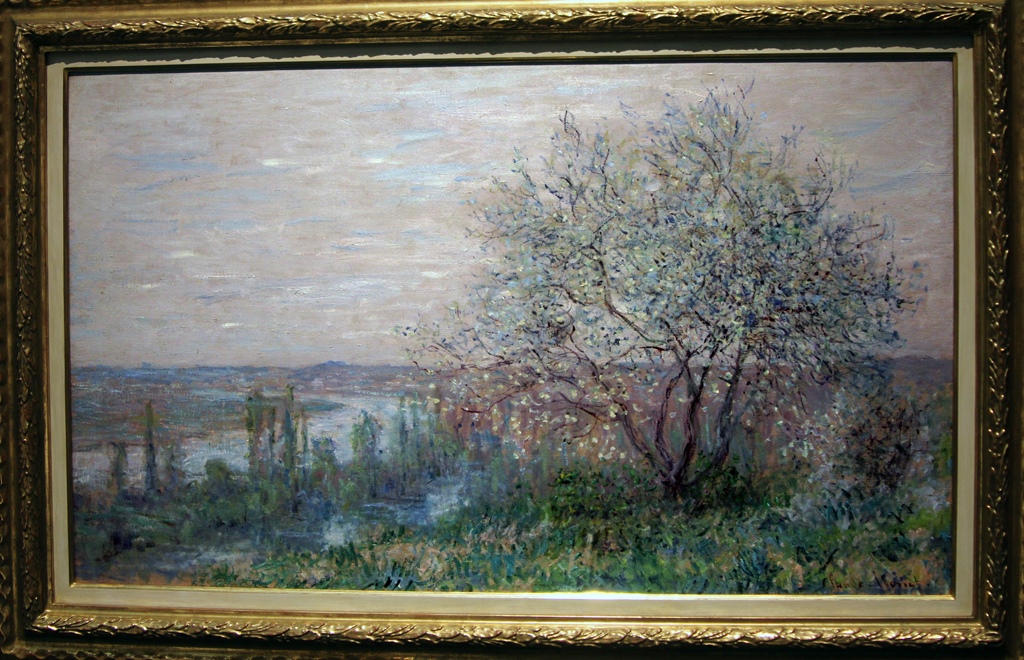
Spring Mood in Vétheuil, Claude Monet (1880)
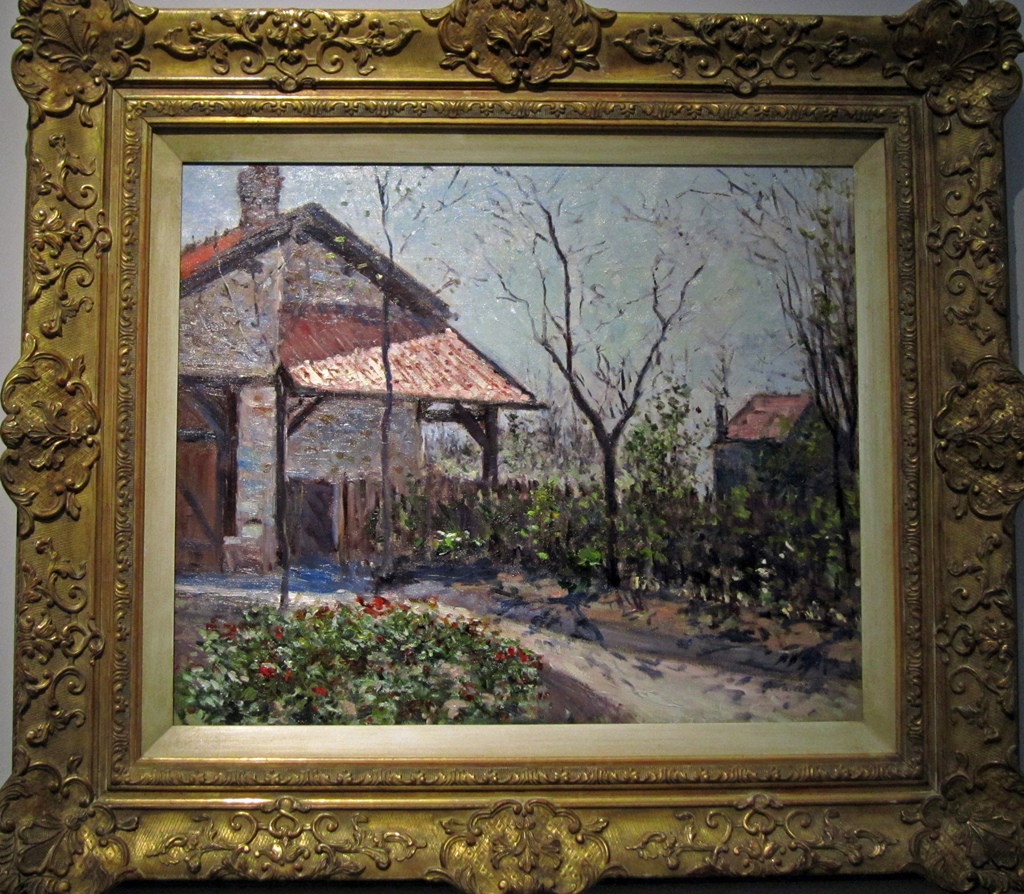
Cabin in the Garden of Petit, Gustave Caillebotte (1882)
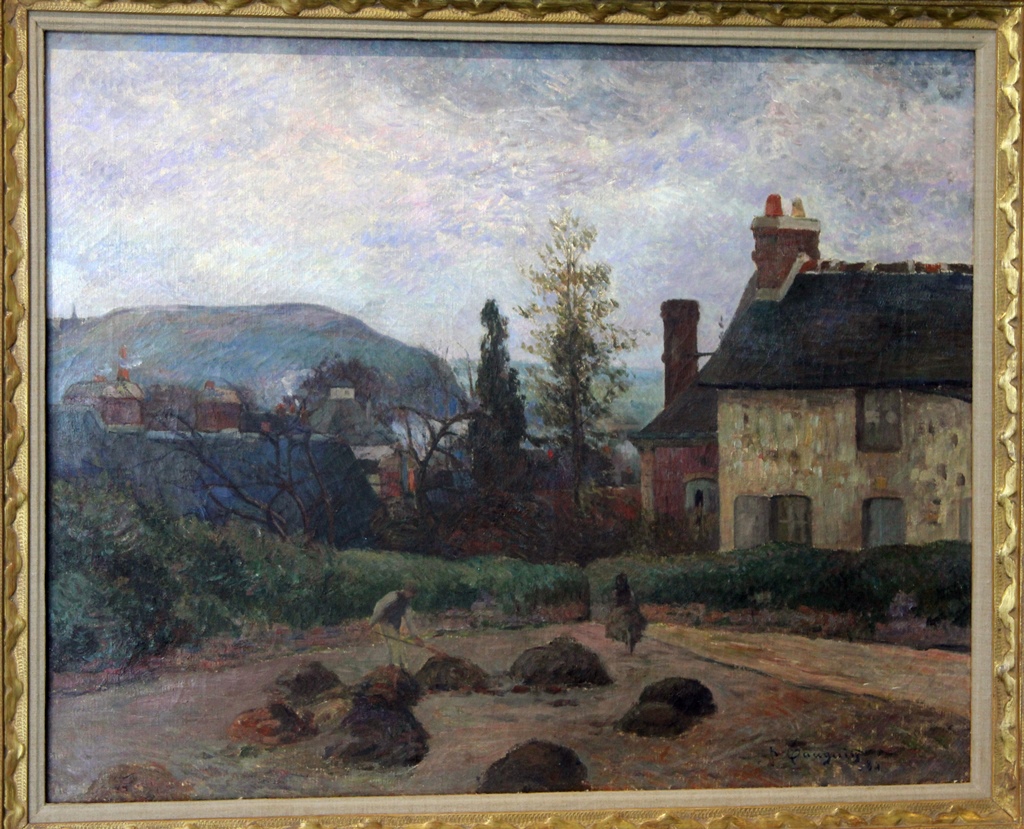
Manuring, Paul Gauguin (1884)
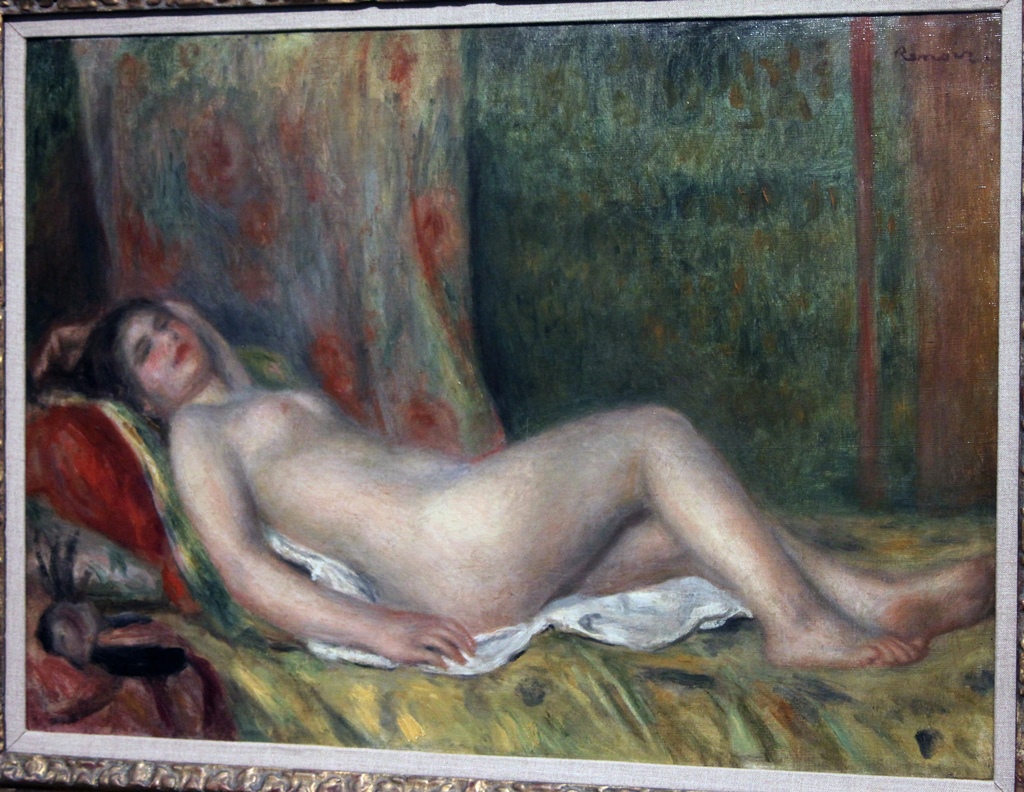
Resting Nude, Auguste Renoir (1890-95)
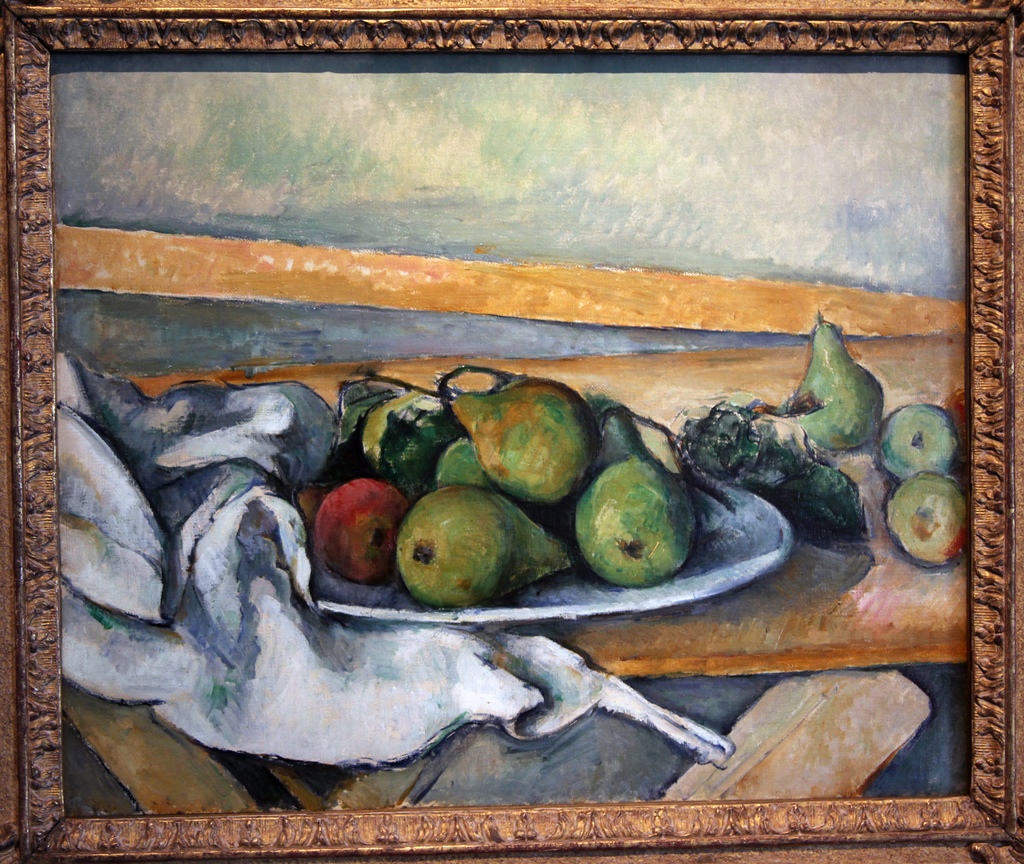
Still-Life with Pears, Paul Cézanne (1895-1900)
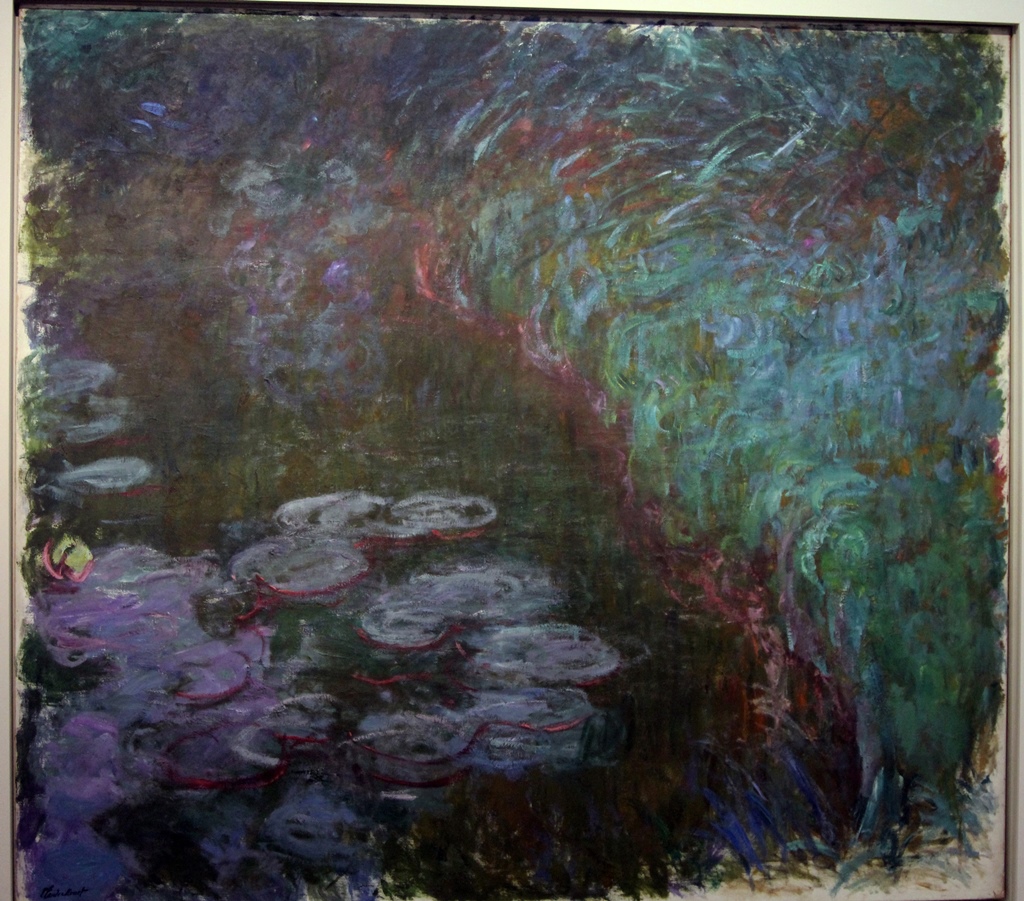
Water Lilies, Claude Monet (ca. 1915)
While the impressionists were getting started, more traditional paintings
were still being produced, and were in fact much more popular at the time.
The Emptied Cup (1886)
Nevertheless, artists continued to push the boundaries into post-impressionism.
The Langlois Bridge at Arles, Vincent van Gogh (1888)
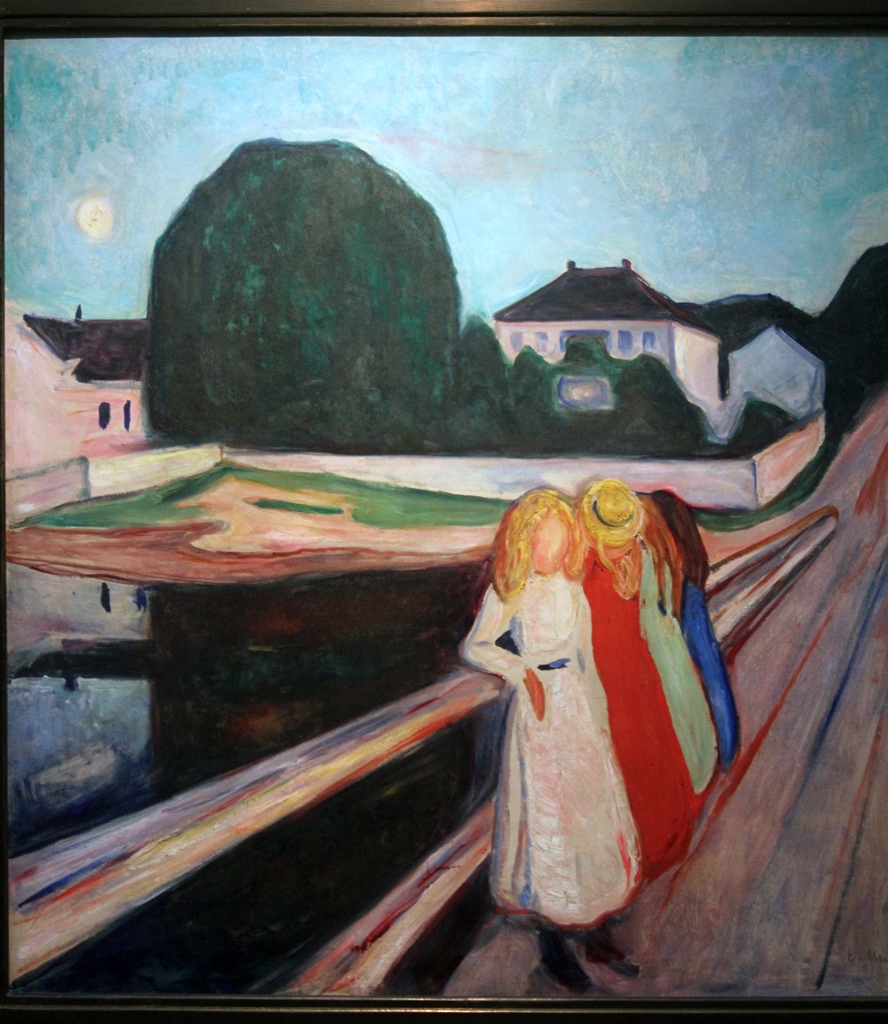
Four Girls on the Bridge, Edvard Munch (1905)
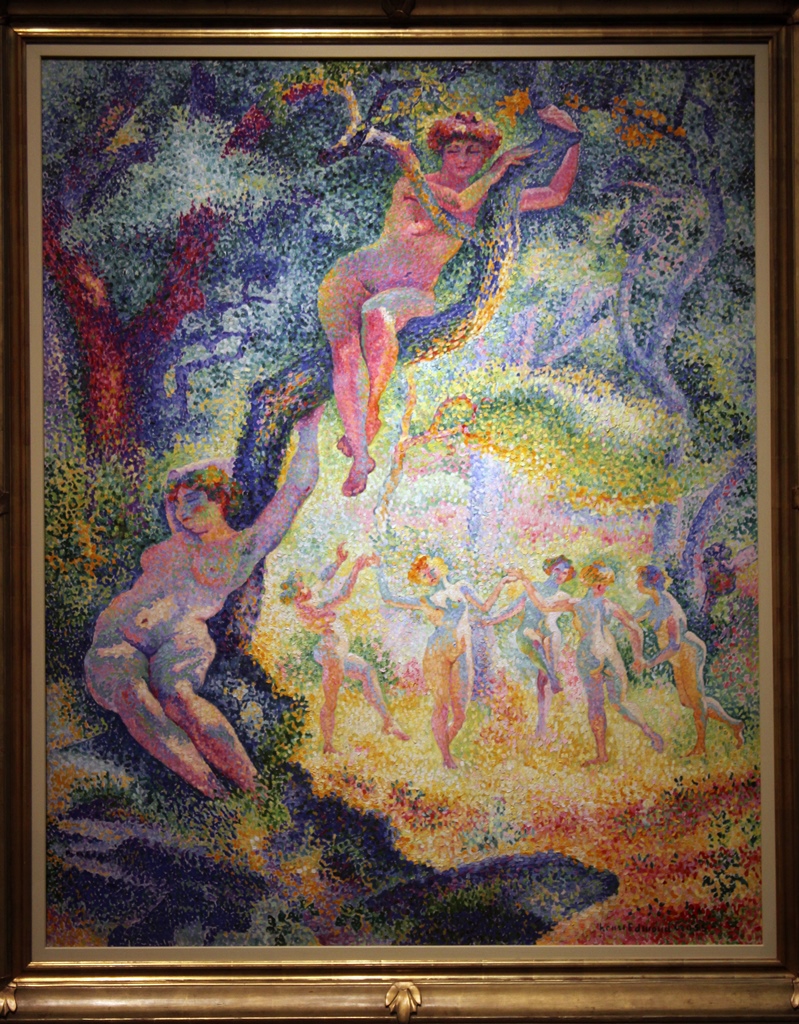
The Clearing, Henri Edmond Cross (1906-07)
The types of things that artists got into next can be found at places
like the Ludwig Museum. But having been exposed to enough culture for
one day, we decided it was time to find lunch and leave town. So we left
the museum, found food, reunited ourselves with our luggage, and headed
for the train station. We had an appointment to keep with Belgium and
its capital, Brussels.
































